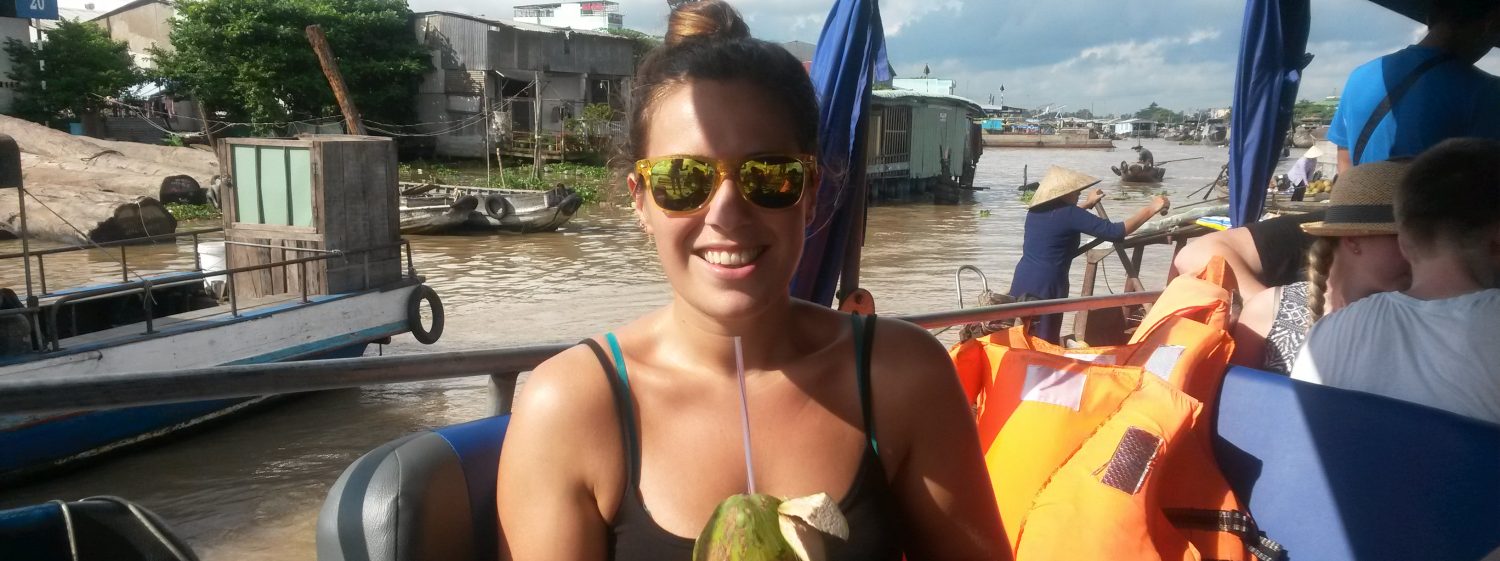The train left Mysore at 7pm, with me having paid 840 rupees (£10.55) for a 3rd class AC upper side bunk to get to Hampi at 7am the following morning, with my blanket, pillow and bed sheet folded neatly on my bunk waiting for me. My back was still really sore so it was extremely difficult to climb onto my top bunk and get comfortable, especially with locals tying on lights and chatting until midnight then starting up again at 6am, so it was even more of a thrill for the train to arrive over 2 hours later than scheduled. First catching a Tuk Tuk from Hospet (Hosapette) Junction to Tungabhadra River in Hampi for 150 rupees (£2) and then crossing the narrow river on a bamboo sphere boat for 50 rupees (63p) to get over to Virupapur Gaddi, I walked the final 10 minutes to my accommodation, Hema Guest House.
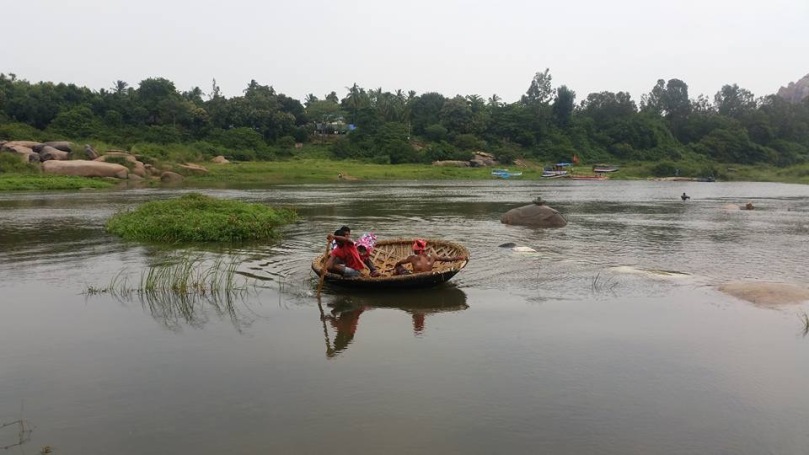
The double en suite rooms with a hammock and table on the porch were 400 rupees (£5) for one person or 700 rupees (£8.75) for two, with Mark joining me as he also made it to Hampi that morning from Goa. There were numerous power cuts in Virupapur during our 3 day stay – apparently due to the heavy rain each night – and the rooms were very basic, but the cafe and common area was a really great place to meet fellow travellers and drink of an evening. Plus the staff were lovely and so helpful.
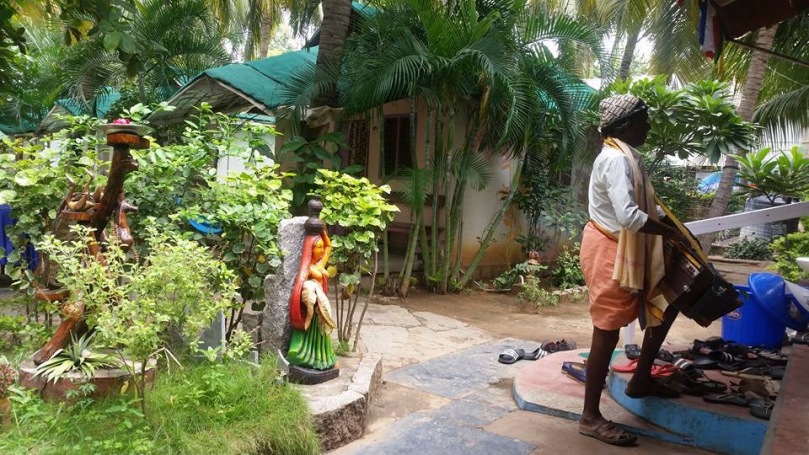
Hampi is a world heritage site famous for its ruins and ridiculous amount of boulders that pile one on top of the other or balance precariously in huge rock formations that spread for miles over banana plantations, rice fields and palm groves. Virupapur Gaddi is less dotted with ruins and more filled with boulders and green landscape, an impressive, gargantuan yet peaceful place, with spots where you can climb atop the boulders for views of sunrise or sunset.
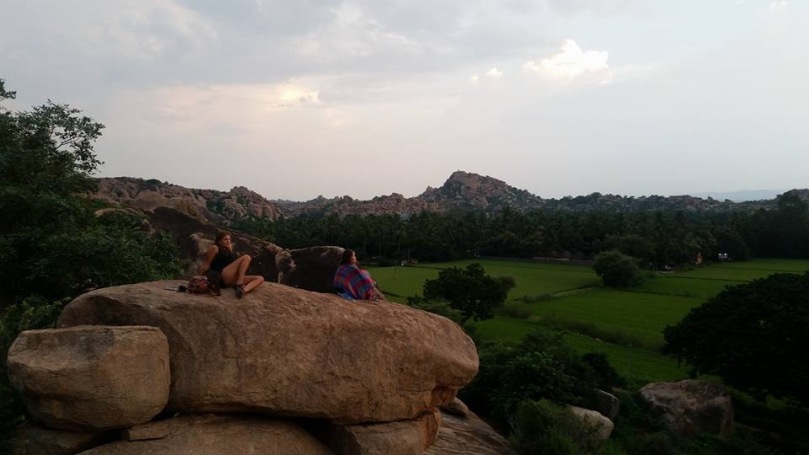
Many of the guest houses that line the two main streets have restaurants or rooftop cafes, offering Indian food at slightly-above-local prices, Israeli food and chai. I didn’t have any of my best food while in Hampi, possibly because it was far too catered for tourists and had less of a local feel. The area, while I was there, was filled with both foreign tourists and Indian tourists, it being especially busy due to the annual Dasara festival (festival of knowledge).
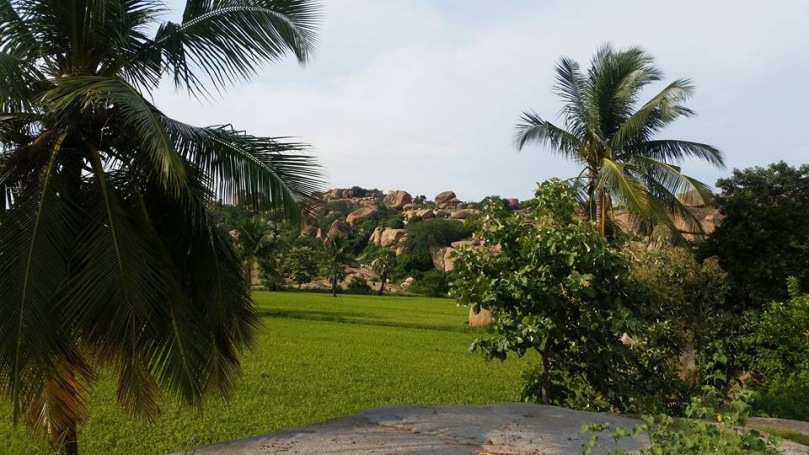
Across the river is Hampi Bazaar, a village filled with restaurants, guest houses and market stalls, punctuated by the Virupaksha Temple. It is free to enter although shoes are not allowed inside so you need to pay 2 rupees (3p) to keep them on the shoe rack; it is one of the city’s oldest structures and there isn’t much inside the temple itself, but the monks hanging about around dusk was an interesting sight to see and apparently the temple elephant gets her bath at 8am.
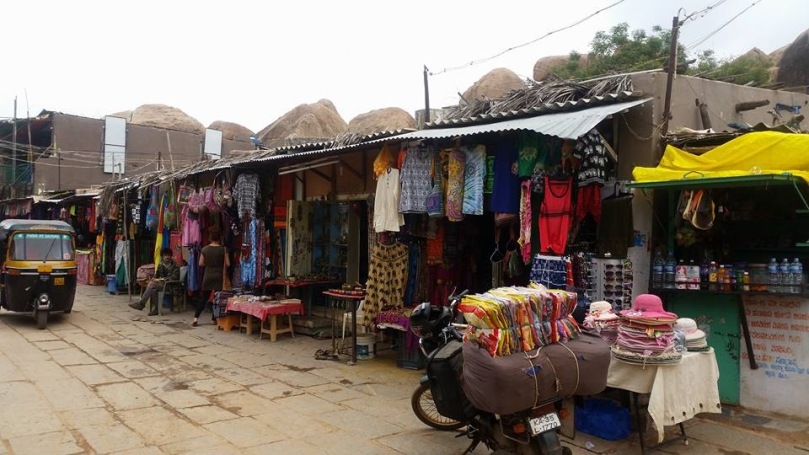
Mark and I hired bicycles for 150 rupees (£2) to explore this side of the river, which is split into the Sacred Centre and the Royal Centre. We began with the sacred centre, closest to Hampi Bazaar, cycling to alongside the river and then starting our walk over, under and amongst the boulders lining the river. It is a huge open sparse of land, boulders literally filling your vision and small, ruined temples dotted along the way.
You pass by Sule Bazaar on your right, turning down the path that used to be a principal centre of commerce (its red lighter district) before reaching the completely deserted ruins of the Achyutaraya Temple. I don’t know why, especially considering the huge number of both local and foreign tourists present in Hampi, but we didn’t pass anyone on this route, only really experiencing the busyness when we reached the Vitthala Temple; it would seem most people chose to take transport round the long way rather than take the scenic route amongst the boulders.
At the Vitthala Temple we had to pay 500 rupees each (£6) for a ticket that covered the entrance to both here and sections of the Royal Centre, paying more than 10 times the amount of Indians at 30 rupees each (38p). It’s a tough concept to grasp, the extortionate rate they charge foreign tourists over locals, especially when you are often then pushed out of the way by locals wanting to take photos or spend half your time obliging to selfies with the locals rather than absorbing the ruins itself. The 16th century temple, complete with the and infamous stone chariot that was smaller than I expected, was interesting but not the “undisputed highlight” of the Hampi ruins, as it has been described. I much preferred the riverside walk there, but that may be due to having every Indian family stop to ask for photos with both myself and Mark, the majority of my time being taken up with indulging the local tourists.
That afternoon we cycled to the Royal Centre, south of Hampi Bazaar, down a main road lined with rice fields and palm groves. It was a beautiful route that reached a flat area of land housing the Underground Virupaksha Temple, Queen’s Bath and – my highlight of the ruins – the Zenna Enclosure.
The 500 rupee ticket covered entrance to the Zenna Enclosure, which housed a gorgeous stretch of open land, lined with boulder mountains to one side and dotted with various ruins inside. Locals were sitting on the grass devouring picnics while we took in the arch structure of the Lotus Mahal and the chambered Elephant Stables, which overlooked the land beyond.
While in Hampi we had an average westernised breakfast at Mango Tree – for some reason popular with tourists and recommended by the Lonely Planet – and a decent veg curry and pizza at rooftop restaurant Ravi’s Rose in Hampi Bazaar. On the Virupapur side of the river we had an uninspiring dosa at a cafe, a good but slow breakfast at Green Cafe, good but overpriced food at river-facing Laughing Buddha and decent momos and burgers at our guest house, Hema. We also spent an hour or so at a local music shop, Mark playing guitar while the locals played the didgeridoo and the drums, with me sat cross-legged on the sofa taking in the atmosphere.
You can also visit the lake and the monkey temple while in Virupapur, as well as engage in the activity of bouldering – or rock climbing – but with my bad back and both of us enjoying slowing down for a few days, AND with all Hampi accommodation booked out over the weekend due to the last few days of the Dasara Festival, we decided to head to nearby Anegundi village for a more local Indian experience.
LS.
